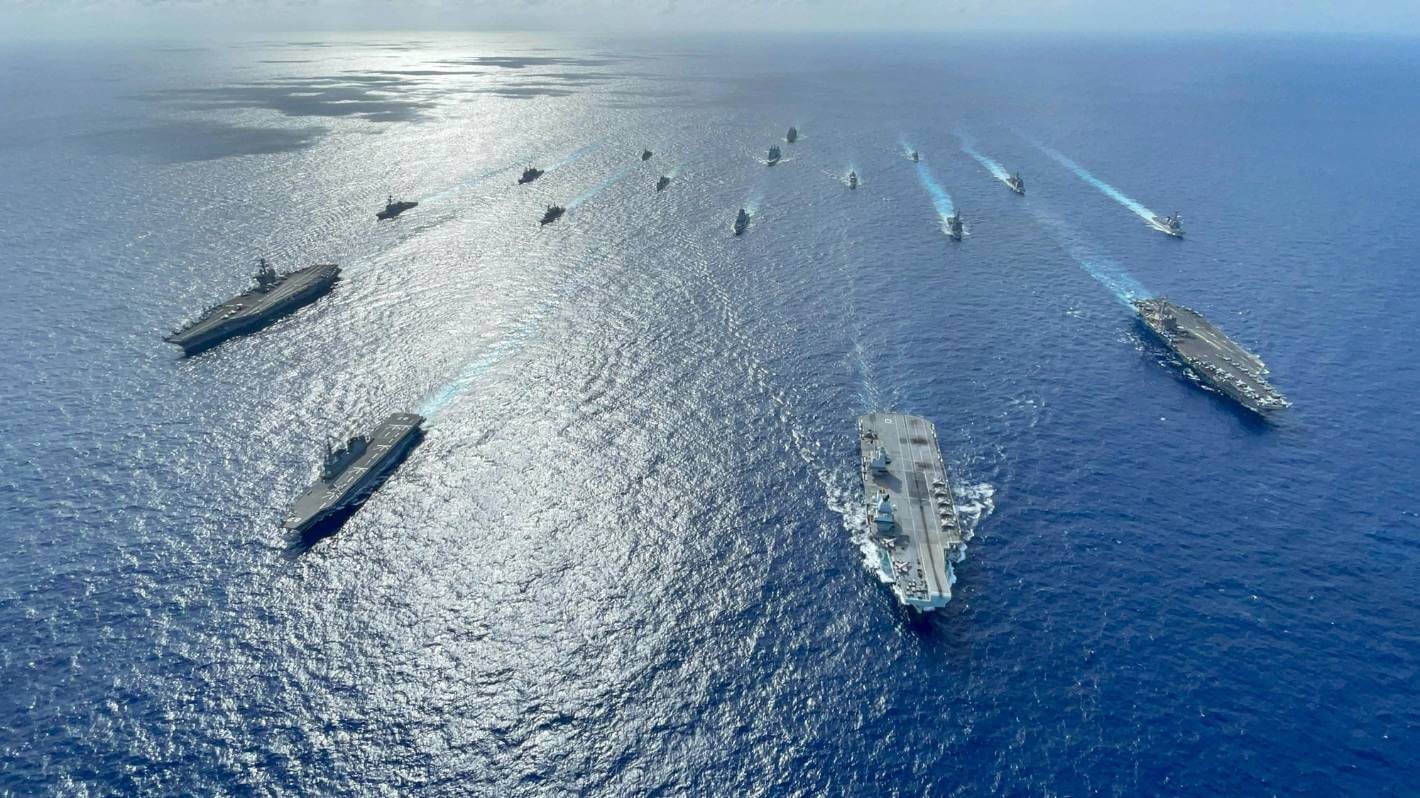A New Zealand (NZ) navy frigate, Te Kaha, joined the United Kingdom’s (UK) Carrier Strike Group (CSG) in the South China Sea on Wednesday amid strained diplomatic ties between China and Taiwan.
New Zealand’s Defence Force confirmed that its royal Navy frigate had joined the CSG, which includes the massive HMS Queen Elizabeth and other military partners, to transit through the South China Sea. Te Kaha is heading to Singapore for Bersama Gold 21 exercises.
In September, Te Kaha and replenishment tanker HMNZS Aotearoa had set off from Auckland’s Hauraki Gulf to interact with nations in the Indo-Pacific. This tour includes the Bersama Gold 21 exercise, which marked the 50th anniversary of the Five Power Defence Arrangement (FPDA). The FPDA includes New Zealand, the UK, Australia, Malaysia, and Singapore.
Additionally, the Defence Force noted their operations in the South East region for over a decade as part of several bilateral and regional defence engagements and reaffirmed their commitment to regional security via its sustained presence. It stated, “NZDF deployments exercise freedom of navigation and overflight. The NZDF undertakes all activities in accordance with international law, and for ships, in particular, the United Nations Convention on the Law of the Sea.”
Moreover, the Defence Force acknowledged the South China Sea as the world’s major shipping lane, routinely transited by navy vessels, aircraft, and merchant ships.
Te Kaha’s transit through the South China Sea comes amid Taiwanese Foreign Minister Joseph Wu’s alert to “fight till the end” if China launches an attack. Last week, China sent 150 aircraft into Taiwan’s Air Defence Identification Zone, which forced the island nation to question Beijing’s intentions. Subsequently, Wu urged the island’s “like-minded partners,” including Australia, to engage in security and intelligence exchanges.
The waters are a point of contention among the surrounding countries. China claims much of these international waters as part of its territory, has built artificial islands and warned others not to sail in its claimed region. However, other nations have rejected China’s expansion, and in 2016, the Permanent Court of Arbitration, based in Hague, also dismissed China’s claims to the waters.
In August, New Zealand said there is “no legal basis for states to claim historic rights’ with respect to maritime areas in the South China Sea, no legal basis for continental states to claim archipelagic status, and that artificial islands do not generate a territorial sea of their own.” The comments were made in a diplomatic note, wherein New Zealand refused to take a stance on competing claims on territorial sovereignty in the waters and explicitly named China.
Earlier in May, New Zealand’s Prime Minister, Jacinda Ardern, and Australian Prime Minister Scott Morrison expressed grave concern over the military build-up in the South China Sea and destabilising activities. Wang Wenbin, a spokesperson from the Chinese Foreign Affairs Ministry, called the leaders’ remarks “irresponsible.”
China has often threatened other nations seeking to travel through the South China Sea. In July, Chinese state-owned media house Global Times threatened the UK’s HMS Queen Elizabeth with “confrontation” if it sailed through waters claimed by Beijing.
NZ Navy Joins UK in South China Sea Amid Tensions Between Taiwan and China
New Zealand’s Navy Frigate Te Kaha has joined the United Kingdom’s Carrier Strike Group in the South China Sea after China flew over 100 warplanes into Taiwan’s air space last week.
October 6, 2021

SOURCE: STUFF
